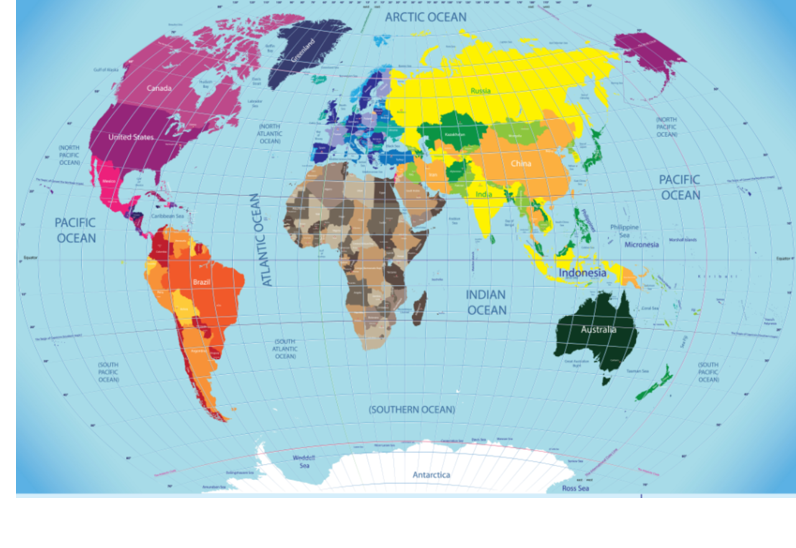- UNITS
- Unit 11 - Seas and Oceans
- Tha Game of Words
- Prof. Xue and Luk's Conversation
- An Active Reader
- Asking Questions
- Language Knots
- Test Corner
- LEARNING

♦ This introductory exercise aims to give you a feel for the sound and rhythm of the language, whilst presenting an overview of the maritime topic at hand. ♦ By reading and then listening to the accompanying audio, you’ll discover how words are pronounced and some simple sentence structures. ♦ Once you are comfortable with how the written and spoken words are connected, you’ll be ready to focus on keywords in the next exercise.
Seas and Oceans
Now we flow from the land’s water bodies and into the ocean. Oceans are the largest water bodies in the world. In one sense, there are five oceans; in another, there’s just one great ocean. The Atlantic, Pacific, and Indian Oceans are joined together in the south by the Southern Ocean, whilst the Arctic Ocean lies far to the north.
The water from one ocean will always be flowing into the others. Every ocean has a different range of temperatures, and different flow of currents. The world has many seas, they are smaller areas of water and are usually closer to the land, often they have land on several sides.
We think of life on Earth as mainly life on land; however, 71% of the Earth’s surface is covered by water, and the oceans are also home to around 80% of the world’s animals. We also think that plankton in the oceans produce around 70% of the world’s oxygen.
The amount of water on our planet is both a home to life, and a thermostat. Our massive oceans help to control the range of the planet’s temperature, as water takes a long time to heat up. Earth has a temperature range of just 125°C, Mercury’s range is five times as large. The oceans, and the atmosphere, spread heat more evenly about the world. The oceans take in heat at the equator, and then the warm water flows to the polar regions.
There is as much geography in the oceans as there is on land. The ocean floor is not flat, there are ridges like mountains, and deep-sea trenches deeper than the deepest valley on land. Earth’s tallest mountain is really the Mauna Kea volcano, which rises 10,203m from the Pacific Ocean floor, and so is 1400m taller than Mount Everest. The average depth of the ocean is 3,790m. The continental margin is the name for the boundary between the oceanic plate and the continental plate of the Earth’s crust. Many of the biggest ocean landscapes occur at these boundaries.
Ocean water is composed of many substances, salts, sugars, acids, bases, and organic molecules can all dissolve in water. The salt in seawater comes from the water moving over the rock and soil and it picks up salts, salt is about 3.5% of the mass of ocean water. Salt levels change from region to region, the Dead Sea has 30% salinity, or salt content, because lot’s of the water evaporates and there is little current. Water density also increases as salinity, temperature, and pressure changes. Differences in water density are responsible for the deep-ocean currents, but more of that next time.
